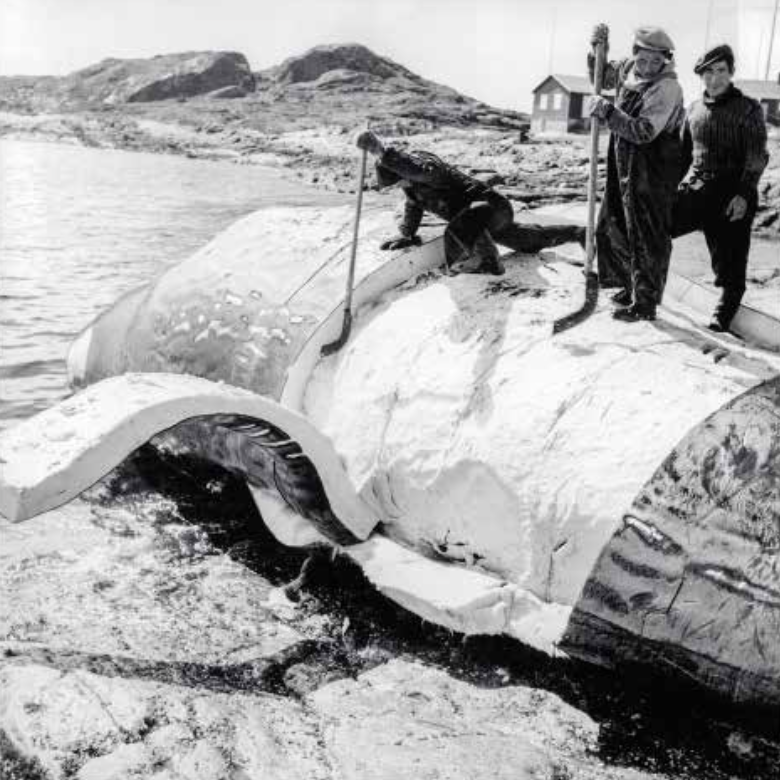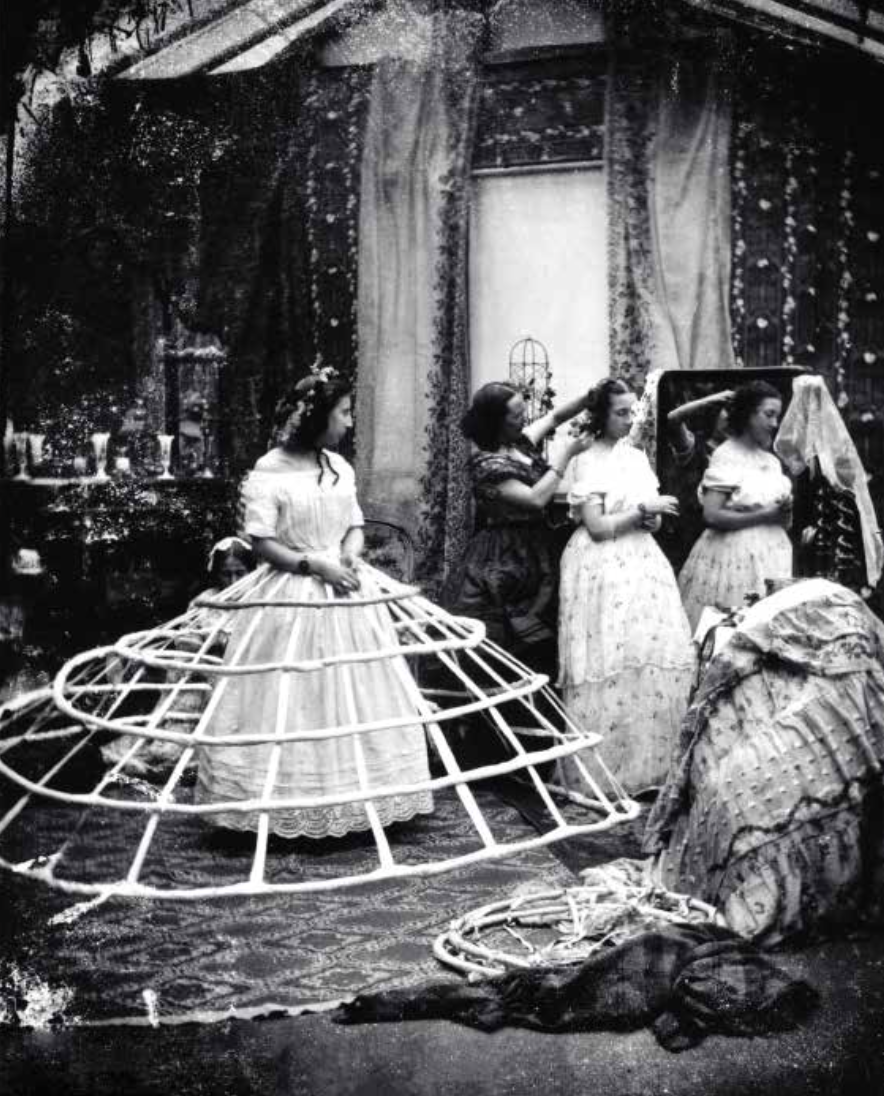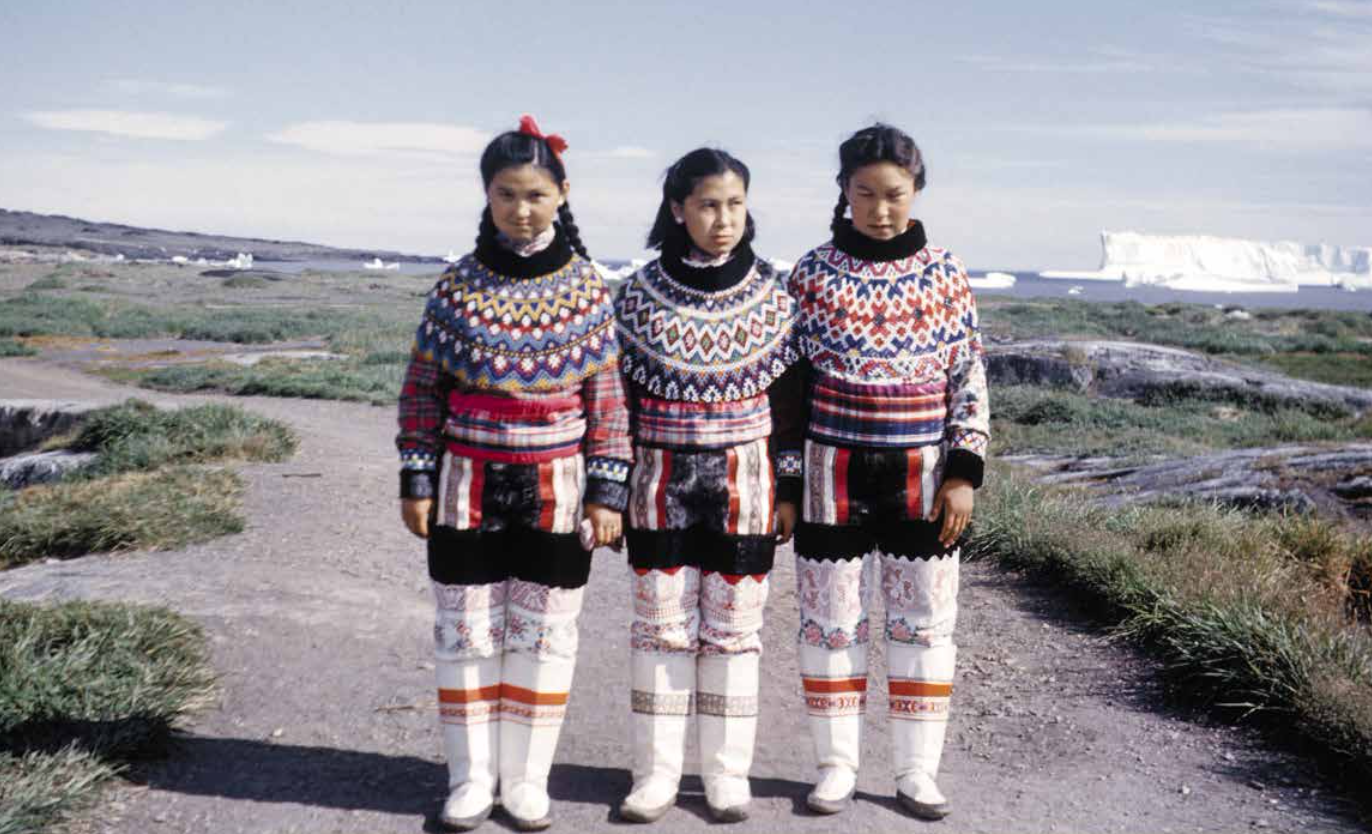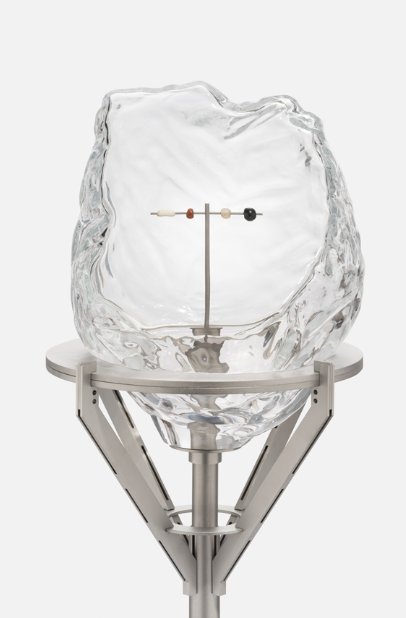
THE EUROPEAN WHALERS
Between 1670 and 1750, around 100-200 ships a year sailed from Europe to the Disko Bay.
They were particularly interested in the fat blubber layer of the bowhead whale. They brought the blubber home where it was melted and used for lighting the streets of cities. Profitable business for the owners of the ships.
The whales were close to extinction, seriously affecting the life of the Inuit.

The whalers traded furs, walrus and narwhal tusks and food from the Inuit.
In exchange Inuit got glass beads, copper pans, felt hats, sewing needles, and cotton trousers.
What consequences did it have for the Inuit that the whale population was close to extinction?
Why were the whalers especially interested in tusks of walrus and narwhal?
Who gained most from trading – the Europeans or the Inuit?
In 17th century Europe, baroque fashion was at its
zenith with skirts that could not be wide enough. Ribs of whalebones were more flexible than those of metal so they became very popular.

In Greenland the colourful glass beads were sewn onto women’s dresses. They are still used in the women’s festive and national dress.

Besides ribs in skirts what were baleens used for? See page 27 in the book.
The girls in the picture are wearing national dresses. Do you know other countries where national dresses are used?
Find pictures and insert them.
Inuit and European music flowed together at festivities
and dances. This engendered good relations
which was no doubt also good for exchange of goods

Between 1670 and 1750, around 100-200 ships a year sailed from Europe to the Disko Bay.
They were particularly interested in the fat blubber layer of the bowhead whale. They brought the blubber home where it was melted and used for lighting the streets of cities. Profitable business for the owners of the ships.
The whales were close to extinction, seriously affecting the life of the Inuit.

The whalers traded furs, walrus and narwhal tusks and food from the Inuit.
In exchange Inuit got glass beads, copper pans, felt hats, sewing needles, and cotton trousers.
What consequences did it have for the Inuit that the whale population was close to extinction?
Why were the whalers especially interested in tusks of walrus and narwhal?
Who gained most from trading – the Europeans or the Inuit?
In 17th century Europe, baroque fashion was at its
zenith with skirts that could not be wide enough. Ribs of whalebones were more flexible than those of metal so they became very popular.

In Greenland the colourful glass beads were sewn onto women’s dresses. They are still used in the women’s festive and national dress.

Besides ribs in skirts what were baleens used for? See page 27 in the book.
The girls in the picture are wearing national dresses. Do you know other countries where national dresses are used?
Find pictures and insert them.
Inuit and European music flowed together at festivities
and dances. This engendered good relations
which was no doubt also good for exchange of goods





